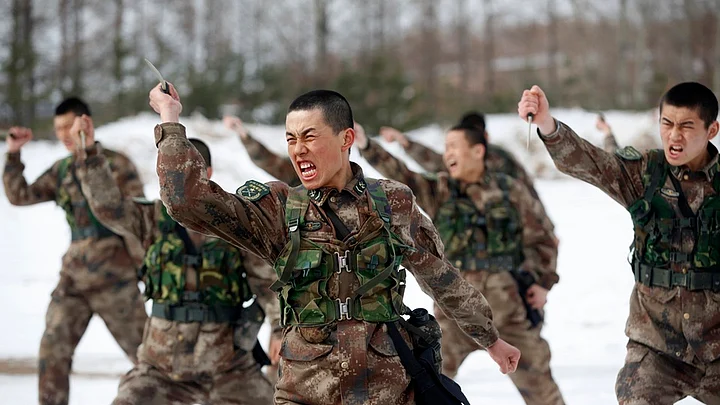Prime Minister Narendra Modi’s surprise visit to Leh is being seen as a powerful symbolic gesture during the ongoing India-China tensions along the Line of Actual Control. The visit comes 17 days after 20 soldiers were killed in a violent face-off between the soldiers of both countries in Galwan Valley in Ladakh. One colonel was killed in action, along with 19 soldiers of different ranks, in this brutal physical fight at Patrolling Point 14 near the LAC in the intervening night of 15-16 June. This was the worst clash between India and China after the 1967 clash.
Two high-level meetings between the Commander of Ladakh based 14 Corps, Lt Gen Harinder Singh and his Chinese counterpart Lin Liu happened after that on 22 June and 29 June.
Why PM’s Visit to Leh is Crucial?
Highly placed sources suggest that the PM has chosen to visit Leh after an impasse in negotiations with the Chinese. In the last Lt Gen-level meeting, the discussion over disengagement reached a dead end.
The Chinese side seems to have agreed to disengage soldiers at Patrolling Point 14, 15 and 17 near the LAC in Ladakh. This is the stretch that goes south from Galwan Valley to the Hot Springs Area. According to sources, the PLA is willing to withdraw a few hundred metres east from India’s perceived LAC.
However, the Chinese side has categorically refused to budge from the Pangong-Tso area of contention, sources say. Recent satellite images showing PLA troops putting up a massive signage in Mandarin in a bid to assert their dominance have made the Chinese intent clear. This signage is located between relief features known as Finger 4 and Finger 5—well within the Indian perception of the LAC.
Chinese Patrols Within Indian Territory in Other Sectors
Sources have also shared that Thuraya satellite phones used by the Chinese have also been intercepted to be within Indian territory in other sectors. Last week, India intercepted the presence of Chinese patrols in Shipki La twice. This region, a mountain pass, falls in Kinnaur district of Himachal Pradesh and runs to Ngari Prefecture in Tibet. Both the times they were at least 15 kilometres inside the Indian territory.
Apart from that, Chinese transgression into the Indian side was also intercepted in Barahoti, Uttarakhand. It needs to be remembered that the same Barahoti area was in news because of Chinese incursion in 2018 as well. At least three Chinese incursions were attempted in 2018 along this border. PLA soldiers were located four kilometres inside the Indian side in August 2018.
PM’s surprise visit to Leh, therefore, may be seen as a stern message to China that India is serious about checking continued transgressions of Chinese troops along the LAC. There has been little to no development in terms of actual withdrawal since the talks on 29 June. An army source says, “They (the Chinese) are where they were, we are where we were.”
Officially Speaking, Where Do We Stand Now?
A slew of satellite images from the region suggest that there has been a relentless amassing of Chinese troops despite the talks of disengagement and de-escalation.
While there have been no official statements on the outcome of the two high-level meetings, some reports mentioned cordial and “business-like” conversations between the two sides. These reports were attributable to “official sources”. There have been no mentions of any particular point of agreement or disagreement, nor is there any information on the actual position of the Chinese troops on the contended geographical area. The two meetings—going on for 10 and 12 hours, respectively—appear to have achieved little in terms of actual de-escalation, despite the reports saying that the two sides remain committed to resolve the matters amicably.
Chinese spokespersons, while commenting on India’s ban on several Chinese apps and other developments, have remained reticent about the military developments along the LAC.
PM Modi has been briefed by Lt Gen Harinder Singh along with officials of ITBP and Indian Air Force.
